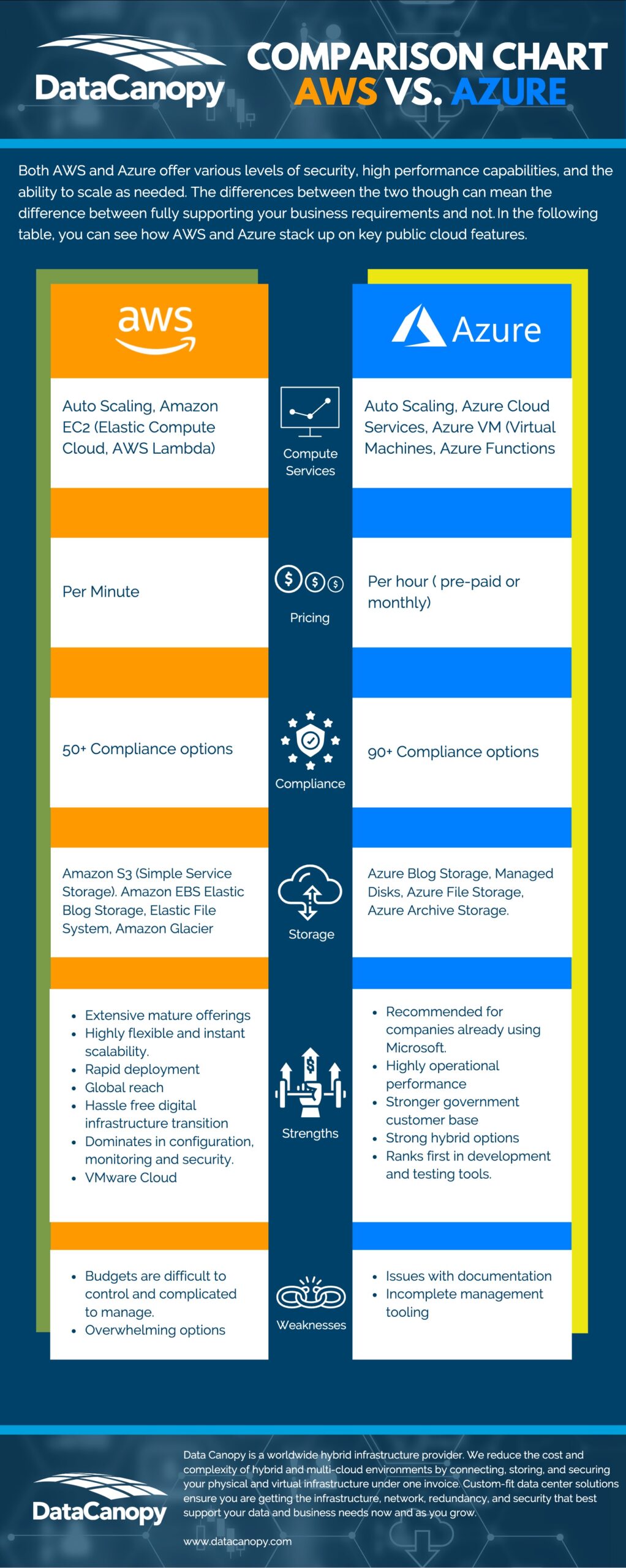The industry has become saturated with cloud computing providers causing some confusion for businesses when deciding which is best for their needs. While it’s great to have so many options to choose from, it can be difficult to understand the differences between the providers. As a solution provider, we often get questions on the differences between the top two public cloud providers: Amazon’s Web Service (AWS) and Microsoft’s Azure.
Similarly, Microsoft Azure is a cloud computing service for building, testing, deploying, and managing applications and services through Microsoft managed data centers. Azure is also a highly scalable platform that you can remotely log into.
In the following table, you can see how AWS and Azure stack up on key public cloud features:

An additional factor that is not covered in the table is disaster recovery. Azure has a dedicated disaster recovery service called Site Recovery. The site is used as a secondary location to conduct business in case of an outage. AWS offers a disaster recovery solution called CloudEndure Disaster Recovery. CloudEndure continuously replicates your machines into a low-cost staging area in your target AWS Account. In the instance of a disaster, you can instruct CloudEndure Disaster Recovery to automatically launch thousands of your machines in in their full state in minutes
Both AWS and Azure offer various levels of security, high performance capabilities, and the ability to scale as needed. The differences between the two though can mean the difference between fully supporting your business requirements and not. To learn more about AWS, Azure and other Data Canopy solutions to custom-fit your cloud environment, contact our team today.



